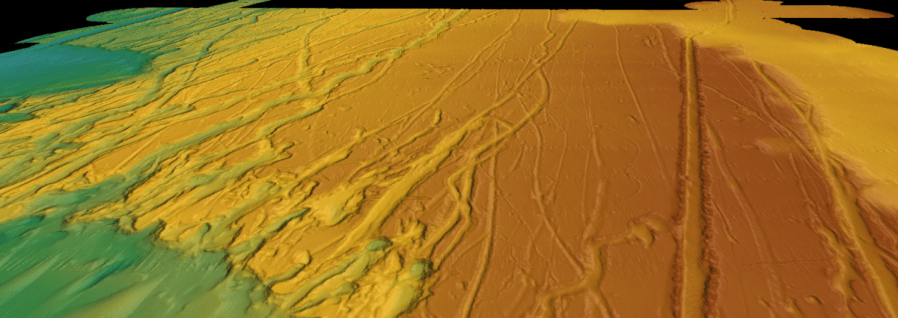A series of mysterious lines carved on the seafloor off North Carolina’s Outer Banks have been identified as “highly unexpected” proof that icebergs once filled the horizon along the East Coast.
It is believed the massive chunks of ice drifted up to 5,000 miles from Canada, and could be seen as far south as the Florida Keys, according to research supported by the U.S. Geological Survey.
“When you think of the Florida Keys, icebergs are probably not the first things that come to mind,” the USGS wrote on Facebook.
“But over 30,000 years ago, towering, bright white chunks of ice drifted south from the Hudson Bay in Canada, pass Cape Hatteras in North Carolina, and all the way to the Florida Keys! … These icebergs were enormous. Measuring about 300 meters, they were similar in stature to the Eiffel Tower.”
The research, published June 16 in Nature Communications, used high-resolution seafloor mapping to find nearly 700 iceberg “scours” plowed into the seafloor. Photos show the lines are not unlike the ancient geoglyphs carved 2,000 years ago in Peru’s Nazca Desert.
They appeared at depths of 557 feet to 1,246 feet, according to The Woods Hole Oceanographic Institution, which worked with the USGS on the research.
“To figure out when and why these icebergs ended up in unexpected waters, a team of researchers sailed a boat to South Carolina and extracted long, skinny tubes of sand, mud and shells from the seafloor,” the USGS said.
“The scientists used radiocarbon dating on the tiny shells (foraminifera) in the sediment to figure out when the icebergs left their mark on the seafloor.”
The rough estimate for timing is about 31,000 years ago, during a “period of massive iceberg discharge known as Heinrich Event 3,” the report states.
Among the more mysterious parts of the discovery is the fact that icebergs were flowing south against the Gulf Stream, the report states. That led researchers to conclude a “large scale but brief” flood of melted ice water was powerful enough to sweep the ice along.
The icy current also helped the icebergs survive long enough to reach subtropical areas, the study found.
“What our model suggests is that these icebergs get caught up in the currents created by glacial melt water, and basically surf their way along the coast,” according to Alan Condron, a Woods Hole Oceanographic Institution climate modeler who worked with USGS geologist Jenna Hill on the research.
“When a large glacial lake dam breaks, and releases huge amounts of fresh water into the ocean, there’s enough water to create these strong coastal currents that basically move the icebergs in the opposite direction to the Gulf Stream, which is no easy task,” Condron said.
The data suggests melting icebergs may have a big impact on climate change, the report concluded. A glut of cold water carried by the ocean current could “significantly weaken … the amount of heat transported north by the ocean (current) … increasing the chance that Europe could get much colder,” the researchers wrote.



